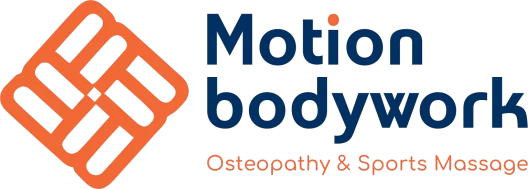
Navigating the world of manual therapy can be overwhelming, especially with so many overlapping terms and techniques. This guide provides a concise overview of key manual therapies to help you understand their unique approaches and applications.
Osteopathy: Osteopathy is a holistic approach to healthcare that emphasises the role of the musculoskeletal system (bones, muscles, and joints) in overall health. Osteopaths use hands-on techniques to diagnose, treat, and prevent health issues.
- Key techniques: Osteopaths use a combination of soft tissue manipulation, stretching, and joint mobilisation. They may also provide lifestyle advice and exercise prescriptions.
- Philosophy: The belief in the body's ability to heal itself, and the idea that proper alignment and balance of the musculoskeletal system are crucial to overall health.
Chiropractic: Chiropractic care primarily focuses on diagnosing and treating musculoskeletal disorders, particularly those related to the spine. Chiropractors believe that proper alignment of the spine can alleviate many health problems.
- Key Techniques: The main technique used is spinal manipulation (often called an "adjustment"), where quick, controlled force is applied to joints to improve alignment and function.
- Philosophy: Chiropractors emphasise the relationship between the spine and the nervous system, believing that spinal health is key to overall well-being.
Physiotherapy (Physical Therapy): Physiotherapy is a broad field that aims to restore movement and function to people affected by injury, illness, or disability. Physiotherapists work across a wide range of healthcare settings.
- Key Techniques: Techniques include exercise therapy, manual therapy, electrotherapy, and education on posture and movement. Physiotherapists often provide rehabilitation exercises and pain management strategies.
- Philosophy: Focused on evidence-based practice, physiotherapists emphasise the importance of restoring functional movement and preventing future injuries.
Sports Massage: Sports massage is a type of massage therapy tailored specifically to athletes and those who engage in regular physical activity. It helps prevent and treat sports injuries.
- Key Techniques: Techniques include deep tissue massage, stretching, compression, and joint mobilisation, all designed to improve flexibility, reduce muscle tension, and promote recovery.
- Philosophy: The goal is to enhance athletic performance, reduce injury risk, and support recovery after strenuous activity.
Deep Tissue Massage: Deep tissue massage focuses on targeting deeper layers of muscles and connective tissues. It’s often used to treat chronic pain and muscle injuries.
- Key Techniques: It involves slow, firm pressure and deep strokes to reach deeper muscle layers and fascia (connective tissue).
- Philosophy: Aimed at breaking down muscle adhesions, improving circulation, and relieving chronic pain or muscle tension.
Soft Tissue Therapy: Soft tissue therapy is a broad term that encompasses various techniques aimed at treating injuries and conditions affecting the muscles, tendons, and ligaments.
- Key Techniques: Techniques can include massage, myofascial release, trigger point therapy, and stretching. It’s often used in combination with other therapies like physiotherapy/sports massage and deep tissue massage.
- Philosophy: The focus is on improving the health and function of soft tissues, enhancing mobility, and reducing pain.
- Manual Therapy: Manual therapy refers to a range of hands-on techniques used by therapists to treat musculoskeletal pain and dysfunction.
- Key Techniques: It includes joint mobilisation, manipulation, soft tissue techniques, and manual stretching. Manual therapy is often part of physiotherapy, osteopathy, and chiropractic care.
- Philosophy: The aim is to restore mobility, reduce pain, and improve overall function by physically manipulating muscles, joints, and soft tissues.
Dry Needling/Medical Acupuncture: Dry needling is a technique where fine needles are inserted into trigger points in muscles to relieve pain and improve function. It’s often used by physiotherapists and other manual therapists.
- Key Techniques: The needle is inserted directly into the muscle trigger points to release tension and alleviate pain. It’s sometimes called medical acupuncture because it uses acupuncture needles but is based on Western anatomy and neurophysiology.
- Philosophy: The goal is to relieve pain and improve muscle function by targeting trigger points and stimulating a local healing response.
Traditional Chinese Acupuncture: Traditional Chinese acupuncture is a component of Traditional Chinese Medicine (TCM) that has been practiced for thousands of years. It involves inserting needles into specific points on the body (acupuncture points) to balance the body's energy (Qi).
- Key Techniques: Needles are inserted into meridian points believed to correspond to the body’s energy pathways, aiming to restore the flow of Qi and promote healing.
- Philosophy: Based on the concept of balancing Yin and Yang and the flow of Qi (vital energy) through the body’s meridians. It’s used to treat a wide range of physical and mental conditions.
Summary of Differences and Similarities
Osteopathy vs. Chiropractic: Both focus on the musculoskeletal system, but osteopathy has a broader holistic approach, while chiropractic focuses more on spinal health.
Physiotherapy vs. Manual Therapy: Physiotherapy is broader, encompassing various treatments beyond manual therapy, including exercise and education. Manual therapy is a subset used within physiotherapy and other practices.
Sports Massage vs. Deep Tissue Massage: Sports massage is tailored for athletes and often includes deep tissue techniques, while deep tissue massage is a general approach targeting deeper muscle layers.
Dry Needling vs. Traditional Chinese Acupuncture: Both use needles but differ in philosophy and application. Dry needling is more focused on Western medical principles and muscle trigger points, while traditional acupuncture is rooted in Eastern medicine and energy flow.
Understanding these distinctions can help individuals choose the right approach for their needs and conditions, ensuring they receive the most effective care.
